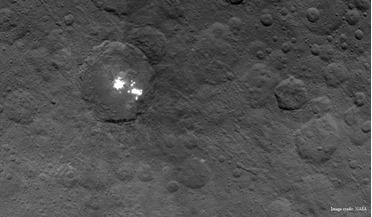 April 2019
On-board propulsion set to drive the smallsat revolution
April 2019
On-board propulsion set to drive the smallsat revolution
...’s primary innovations has been the replacement of xenon with iodine. Often associated with everyday iodised table salt, iodine has many similar properties to xenon, but is significantly cheaper and, importantly, is a solid at room temperature. This...
 March 2021
Campuses, clusters and a leading force in UK space
March 2021
Campuses, clusters and a leading force in UK space
... STFC scientists and engineers are utilising the unique properties of a working potash, polyhalite and rock-salt mine to further research into planetary exploration and environmental science. Boulby Underground Laboratory currently includes a 4000...
 February 2022
Nutritional issues on interplanetary spaceflights
February 2022
Nutritional issues on interplanetary spaceflights
... effect (carrots, beets, apples, plums, apricots, dried fruit, wheat bran) enrich the ration with potassium salts (dried fruit: apricots and raisins, white cabbage and cauliflower, potatoes, and other fruit and vegetables...
 January 2023
LUNAR OASIS – architectural visions for an integrated lunar habitat
January 2023
LUNAR OASIS – architectural visions for an integrated lunar habitat
... was to create a habitat with constant availability of water and solar energy, which can be converted and stored in a salt tank. Rovers dock and can be charged here and the crew can enter and exit the...
 May 2024
The challenges of satellite communications on the move
May 2024
The challenges of satellite communications on the move
...harsh environments, such as on an aircraft or at sea, a radome is needed to provide protection to the hardware from wind, rain (or salt at sea), or from bird strikes, hail, dust and other harsh conditions in the air. With mechanically steered ...
 01 July 2015
Ceres, Dawn, mysterious bright spots, and exploring the solar system
01 July 2015
Ceres, Dawn, mysterious bright spots, and exploring the solar system
... they got there. Theories range from the possibility of highly reflective materials on the surface, containing ice or salts. So far, NASA says that the possible cryovolcanic origin of the bright spots is not a very likely theory...